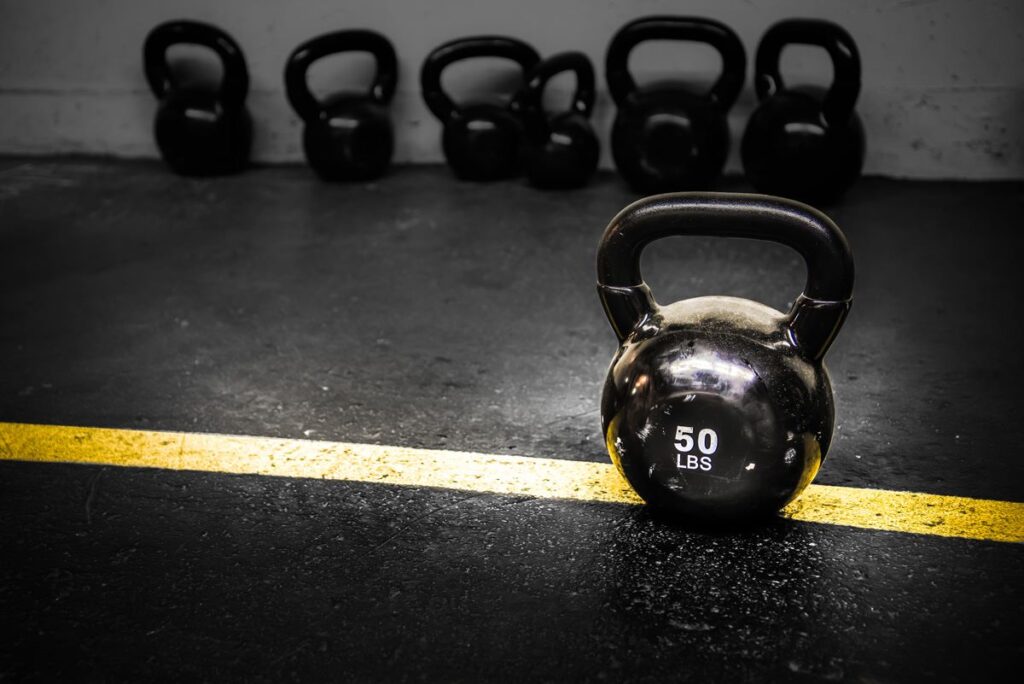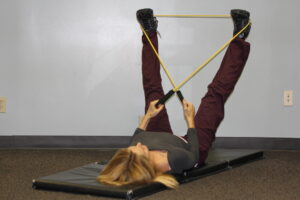Your forearms are the unsung heroes of upper body strength, facilitating almost every part of your day, from shaking hands to lifting weights. However, they often don’t get the exercise attention they deserve, leading to potential pain and weakness. Strengthening your forearms is not only crucial for a balanced physique but is also vital for preventing injuries and improving performance in sports and activities that require a strong grip. In this comprehensive guide of Forearms Exercises, we will discuss why it’s crucial to build forearm strength, how to alleviate forearm pain, and provide a step-by-step plan to enhance the might of your grip with various exercises suitable for all levels of fitness. Get ready to elevate your forearm fitness for a life of solid handshakes, powerful lifts, and a thriving upper body strength.
The Importance of Forearm Strength in Daily Activities and Sports
Having a strong grip is an asset in day-to-day life and almost every sport, including basketball, tennis, golf, and climbing. A solid grip not only enhances your performance but also reduces the chances of injuries, especially when lifting heavy objects. Whether you’re an athlete or a casual sports enthusiast, dedicated forearm training can be the edge that propels you to the next level.
Understanding The Role of Forearms in Physical Activities
Your forearms work quietly but are crucial for many physical activities, acting like the backstage crew of your body, ensuring everything operates smoothly. From gripping your toothbrush in the morning to lifting weights at the gym, your forearms are always at work.
They are key for a strong connection between your body and the objects you handle. It’s not just the strength to grip but also the endurance to keep gripping. Whether holding a golf club, swinging a tennis racket, or climbing, your grip strength significantly affects your performance.
Yet, forearms are often neglected in workout routines. To boost sports performance and ease daily tasks, adding forearm exercises to your routine is wise. Strengthening these muscles improves hand strength activities and prevents injuries related to weak grip strength.
Focusing on your forearms enhances sports performance and your overall ability to perform everyday tasks effortlessly. With strong forearms, opening jars, carrying groceries, or moving furniture becomes much easier.
The Impact of Forearm Strength in Sports
Every athlete knows the challenge of the last stretch—when your body wants to stop but your goal is near. In these moments, grip strength can be the key to victory. Forearm strength is crucial in sports, impacting performance across the board.
For climbers, a strong grip means conquering tougher routes and longer climbs. Tennis players with a solid grip can serve more powerfully and volley with precision. Golfers benefit from better swing control and shot accuracy. It’s not just power, but also control, endurance, and precision that matter.
Even in sports where grip strength may seem less critical, like running or swimming, strong forearms improve arm movement efficiency, boosting overall performance. Surprisingly, these small muscles can greatly enhance athletic capabilities.
Forearm strength also plays a vital role in injury prevention. Athletes with stronger forearms are less likely to suffer from sprains, strains, and other hand and wrist injuries. Strong muscles and tendons can better withstand the stresses of physical activity.
Incorporating forearm exercises into your training is about more than building muscle; it’s about enhancing your competitive edge. Strengthening your forearms allows you to play harder, last longer, and push your physical limits. It’s an essential part of achieving peak performance and ensuring athletic longevity.
How to Start Strengthening Your Forearms
Starting on the path to stronger forearms may seem daunting, but it’s quite simple. First things first, include forearm exercises in your weekly routine. Aim for at least two sessions dedicated to these muscles. This doesn’t mean you have to overhaul your entire fitness plan. Instead, sprinkle these exercises into your current regimen to complement your overall strength training.
A crucial tip for beginners is to focus on form over weight. Proper technique ensures maximum muscle engagement and minimizes the risk of injury. Start with lighter weights and progressively overload as you become more comfortable and stronger. This gradual increase not only boosts your forearm strength but also improves overall muscle endurance.
For those who might not frequent the gym, no worries! Household items like water bottles or even resistance bands can serve as excellent substitutes for standard gym equipment. The key is consistency and gradually challenging your muscles with increased weight or more repetitions.
Remember, hand grips, wrist curls, and reverse curls are your go-to exercises. But don’t shy away from exploring variations. Incorporating different movements can prevent boredom and target the muscles from various angles, promoting more balanced strength development.
Recognizing the Symptoms and Causes of Forearm Pain and Weakness
Forearm discomfort or weakness can be debilitating, affecting the quality of your life. Here are some common causes and symptoms to watch out for.
Common Symptoms of Forearm Pain and Weakness
- Aching or soreness
- Numbness or tingling
- Weakness in the hand or fingers
- Difficulty executing fine motor skills
Common Causes of Forearm Pain and Weakness
- Repetitive strain from activities like typing or using tools
- Trauma from accidents or falls
- Overuse injuries in sports
- Arthritis and other degenerative conditions
Understanding the triggers of forearm pain is the first step to managing and preventing further discomfort.
Diving into Forearm Exercises: Techniques and Equipment
Forearm strength isn’t just for athletes. It’s crucial for anyone aiming to improve their functional fitness. Imagine opening jars, lifting furniture, or even typing, becoming easier. That’s what focusing on your forearms can do. Forearm exercises should be a staple in everyone’s fitness regimen.
Easy-to-Start Forearm Exercises with Equipments
Forearms Exercises with Dumbbells

Farmers Walk with Dumbbells: A practical and effective way to build forearm strength. Grab a pair of dumbbells, one in each hand, and walk around your training area for a specified time or distance. Keep your back straight and shoulders back to maximize the benefit. This is one of the best forearms workouts with dumbbells, as it not only strengthens the forearms but also engages your core and improves stability.
Dumbbell Wrist Flexion: Sit on a bench or chair with a dumbbell in each hand, palms facing up. Rest your forearms on your thighs or a flat surface with your wrists hanging over the edge. Flex your wrists upward, lifting the dumbbells as high as possible, then lower them back down. This exercise targets the flexor muscles of the forearm.
Dumbbell Wrist Extension: Similar to the wrist flexion but with palms facing down. This time, extend your wrists upwards against the resistance of the dumbbells, then lower them back down. It’s crucial for developing the extensor muscles on the opposite side of the forearms.
Zottman Curl: Begin with a dumbbell in each hand at arm’s length, palms facing forward. Curl the weights while keeping your upper arms stationary. At the top of the movement, rotate your wrists so that your palms face forward before lowering the dumbbells back to the starting position. This exercise effectively works both the biceps and the forearm muscles.
Forearms Exercises with Kettlebells

Kettlebells offer a unique form of resistance due to their shape and handle, making them perfect for forearm development. Here are a few kettlebell exercises to incorporate into your training regimen:
Kettlebell Swings: Stand with your feet shoulder-width apart, gripping the kettlebell handle with both hands. Begin by swinging the kettlebell between your legs, then explosively thrust your hips forward to swing the kettlebell up to shoulder height. Keep your arms straight and core tight throughout the motion. This dynamic exercise improves grip strength while also engaging the entire posterior chain.
Bottom-Up Kettlebell Press: Begin by holding a kettlebell by the handle in one hand with the bottom of the kettlebell pointing upwards, your arm should be in front of your chest. Press the kettlebell overhead until your arm is fully extended, then carefully lower it back to the starting position. This exercise requires considerable grip strength to stabilize the kettlebell, thus significantly working the forearms.
Kettlebell Farmer’s Walk: Similar to the dumbbell version, but with kettlebells, this exercise is excellent for building forearm strength. Hold a kettlebell in each hand and walk a certain distance or for a specific time. Keep your posture upright and shoulders back. The unique grip of the kettlebell will challenge your forearms throughout the walk.
Kettlebell Wrist Curls: Sit on a bench with your forearms resting on your thighs or the bench itself, holding a kettlebell in one or both hands with your palms facing up. Flex your wrists to curl the kettlebell towards you, then extend them to lower it back down. This isolates the forearm flexors effectively.
Forearms Exercises with Power Twister
The Power Twister is a versatile piece of equipment designed to enhance forearm strength through dynamic resistance. Here are some exercises you can perform with a Power Twister to target your forearms effectively:
Basic Bend: Hold the Power Twister in front of you with both hands, your palms facing down. Bend the bar by bringing your hands together, then slowly return to the starting position. This exercise primarily targets the forearm muscles and can be repeated for multiple reps.
Overhead Bend: For this exercise, hold the Power Twister above your head with your arms fully extended. Slowly bend the bar by bringing your hands closer together, then gently return to the starting position. This variation not only works your forearms but also engages your shoulders and upper back.
Behind the Back Bend: Hold the Power Twister behind your back with both hands, palms facing away from your body. Attempt to bend the bar by moving your hands toward each other, then carefully return to the starting position. This exercise focuses on the forearms and adds an extra challenge due to the position of the equipment.
Forearms Exercises with Hand Gripper

Using a hand gripper is an excellent way to specifically target the muscles in the forearms, improving both grip strength and endurance. These compact devices are perfect for anytime, anywhere workouts. Here are a few exercises you can do with a hand gripper:
Standard Grip Squeeze: This is the fundamental exercise with a hand gripper. Hold the gripper in one hand with the palm facing you and squeeze the handles together as closely as possible. Release slowly and repeat for reps. Aim for multiple sets with each hand to ensure balanced strength development.
Held Squeeze for Time: Instead of focusing on the number of reps, squeeze the gripper closed and hold it for a set period, such as 10-20 seconds, before releasing. This isometric exercise improves your grip endurance and is particularly useful for climbers and athletes needing to maintain a strong grip for extended periods.
Rapid Fire Squeezes: For this exercise, rapidly squeeze and release the gripper as many times as possible in a set time frame, such as 30 seconds. This will not only improve grip strength but also work on the speed of grip contractions, beneficial for those engaging in sports that require quick, powerful hand movements.
Progressive Overload: To continuously improve your grip strength, practice progressive overload by increasing the resistance of the hand gripper. Begin with a lighter resistance and gradually move to higher resistance levels as your forearm strength improves. This can be achieved by using adjustable hand grippers or having a set of grippers with different resistances.
Alternate Grip Squeeze: Hold the gripper upside down, with the spring pointing towards the wrist. Squeezing it in this manner targets slightly different muscles in the forearm and offers a varied stimulus for growth and strength.
Techniques for Success

Achieving success in forearm training is about more than just repetition. It’s about smart strategies and fine-tuning your approach. Here’s how to do it right:
Consistency is Key: Like any fitness goal, consistency wins. Aim to train your forearms 2-3 times a week. This regularity ensures progress without overtraining.
Focus on Form: Poor form not only hampers progress but also increases injury risk. Ensure correct posture and movement in each exercise. Video tutorials can help immensely.
Vary Your Exercises: Muscle adaptation reduces gains. Keep your muscles guessing by rotating exercises every few weeks. This variation stimulates growth and strength.
Mind-Muscle Connection: Pay attention to the muscles you are working. Focusing mentally on the exercise enhances engagement and effectiveness. Visualize your forearms working throughout each exercise.
Increase Resistance Gradually: Start with what you can handle, then slowly increase. This principle of progressive overload is crucial for continuous improvement.
Rest and Recover: Muscles grow when rested, not when worked. Give your forearms adequate downtime between sessions to recover and grow stronger.
Stay Hydrated and Eat Right: Proper nutrition and hydration fuel your workouts and aid recovery. Don’t overlook their importance in your training regimen.
Track Your Progress: Keeping a workout log helps you see improvements over time. This motivates and informs necessary adjustments to your training plan.
By incorporating these techniques, you’re not just working out smarter; you’re setting the stage for tangible and sustained improvements. Remember, the key to success is persistence, patience, and a positive mindset. Train smart, and watch your forearms grow stronger and more defined than ever before.
A Word on Safety
Forearms can be sensitive to overwork and strain. Listen to your body. If you feel pain that’s sharp or lasts more than a day, take a break. Consult a professional if needed.
Forearm Exercise Routines for Every Level
Whether you’re a beginner starting your fitness journey, an intermediate lifter aiming to refine your technique, or an advanced athlete pushing the limits of your strength, there’s a routine designed with you in mind.
Beginners: Laying the Foundation
For newcomers, it’s essential to start with lighter weights and focus on form and learning new movements.
- Wrist Curls – 3 sets of 10 reps
- Reverse Wrist Curls – 3 sets of 10 reps
- Farmer’s Walk – 3 sets of walking for 30 seconds
Intermediate: Stepping Up
Once you’ve mastered the basics, increase the weight and intensity gradually to challenge your muscles further.
- Wrist Curls – 4 sets of 12 reps
- Reverse Wrist Curls – 4 sets of 12 reps
- Towel Grip Hangs – 3 sets of 20 seconds
- Plate Pinches – 3 sets of 15 seconds
Advanced: The Power Phase
Advanced exercisers can amplify their routine with more sets, heavier weights, or advanced techniques like fat bar training or adding band resistance.
- Wrist Curls – 5 sets of 15 reps
- Reverse Wrist Curls – 5 sets of 15 reps
- Towel Grip Hangs – 4 sets of 30 seconds
- Plate Pinches – 4 sets of 20 seconds
- Fat Bar Deadlifts – 3 sets of 8 reps
Remember to always listen to your body and never sacrifice form for weight.
How to Prevent Forearm Injuries and Promote Overall Health
Forearm injuries can sideline your progress, making prevention a top priority for any fitness enthusiast. A focus on maintaining a balance between training intensity and recovery is essential. Implementing exercises that enhance flexibility and strength in the wrists and arms plays a significant role. Stretching before and after workouts can’t be overlooked. It increases blood flow, reduces risk of injury, and improves overall performance.
Proper Warm-up and Cool-down
Incorporate forearm-specific stretches into your routine. These help maintain range of motion and prevent stiffness. Grip strength exercises also contribute to injury prevention. They fortify supportive muscles around the joints. Don’t overlook the importance of proper form. This minimizes strain on your forearms and prevents common overuse injuries.
Nutrition and Hydration
Adequate hydration is crucial for muscle health and recovery. Drink plenty of water throughout the day, especially before and after workouts. Nutrition plays a vital role in muscle repair and growth. Focus on a balanced diet rich in protein, vitamins, and minerals. This fuels your body and supports muscle recovery.
Rest and Recovery
Rest days are your friends. They allow your muscles time to heal and grow stronger. Ignoring pain can lead to more serious injuries. If discomfort arises, rest, and seek medical advice if it persists. Lastly, vary your workout routine. This prevents repetitive strain injuries caused by overusing the same muscle groups.
Implementing these strategies not only aids in preventing forearm injuries but also promotes overall health. Remember, a little caution goes a long way in keeping your fitness journey on track.
Success Stories and Testimonials
Emma’s Journey: After six months of following the intermediate forearm routine, Emma noticed not only an increase in her forearm strength but also an improvement in her grip, which greatly enhanced her performance in rock climbing. She credits the consistency and variety in her training program for these results.
Mike’s Transformation: Starting as a beginner, Mike was determined to increase his forearm size and strength for competitive arm wrestling. Within a year of diligently sticking to the progression from beginner to advanced exercises, he saw remarkable growth and went on to win his first local arm wrestling tournament.
Liam’s Achievement: Liam, an avid weightlifter, had always struggled with his grip strength, which was holding back his deadlifting progress. By incorporating the recommended grip exercises and focusing on his forearm health, he was able to break through his plateau and hit a new personal best in deadlifting after just four months.
Testimonial by Sophia: “The thorough guidance on form and the emphasis on safety provided in this program significantly improved my forearm training. I’ve gained not just strength but confidence in my lifts.”
Testimonial by Alex: “I was skeptical about needing a separate forearm routine, but the results speak for themselves. My endurance in long climbing routes has improved drastically. Huge thanks to this program!”
Testimonial by Jordan: “Following the advanced routine not only gave me stronger forearms but also reduced the wrist pain I used to experience after workouts. The attention to recovery and injury prevention has been a game-changer for me.”
FAQs About Forearm Exercises
Here are some common questions relating to forearm exercises:
How often should I do forearm exercises?
For beginners, 2-3 times a week is sufficient. Intermediate and advanced individuals can increase to 4-5 times a week but should vary the intensity and focus of the exercises.
Can forearm exercises help with carpal tunnel syndrome?
While not a cure, strengthening the muscles in the forearm can help alleviate some symptoms of carpal tunnel syndrome by reducing the strain on the nerves in the wrist.
What role does grip strength play in weight training?
A strong grip is crucial for performing exercises like deadlifts and pull-ups, where the hands are the primary connection to the weight. Weak grip strength can limit the amount of weight you can lift safely and effectively.
Is it necessary to use equipment for forearm exercises?
Not necessarily. While equipment can enhance your training by providing resistance and variety, there are numerous effective body-weight exercises, such as wrist curls and reverse wrist curls, that require minimal to no equipment.
How can I measure progress in forearm strength?
Progress can be measured in several ways including increases in the weight you can lift, the number of repetitions you can complete, and improvements in grip strength. Additionally, you might notice enhanced performance in activities that rely on forearm strength and grip.
What is the best time to do forearm exercises, before or after my main workout?
It depends on your goals and the intensity of your overall workout. If forearm strength is a priority, consider doing these exercises at the beginning of your workout when you’re fresh. If not, doing them at the end can ensure they do not detract from your main workout goals.
Can improving forearm strength benefit other areas of my fitness routine?
Absolutely. Strong forearms contribute to a stronger grip, which can significantly improve your performance in lifts such as deadlifts, pull-ups, and rows. A strong grip also enhances stability in yoga and pilates, and endurance in activities like rock climbing and tennis.
In Conclusion: Grasping the Future with Stronger Forearms
Forearm exercises are not just for bodybuilders or athletes; they are for anyone seeking a healthier, more robust upper body. By incorporating these exercises into your fitness regimen, you’re not just working your muscles; you’re preparing your body for a life full of activity and achievement.







